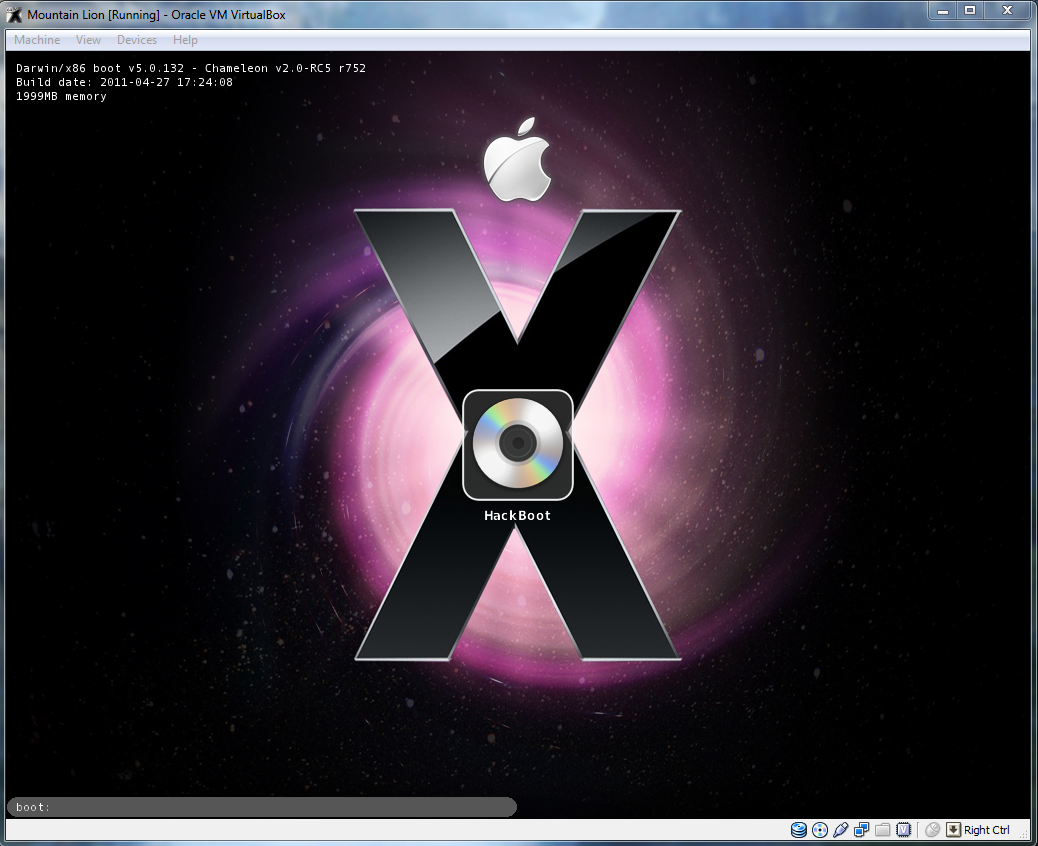

A RETAIL copy of OS X Snow Leopard ($29.99 at the Apple Store).Instructions on how to acquire all components are in the video descriptions. –UPDATE 2– Several users have pointed out that the following videos show how to install and run OS X Yosemite in VirtualBox 4.3.20. On a system with an AMD FX8350 processor and VirtualBox-4.1.18, however booting the virtual machine just yields a gray apple screen and no hard drive activity. I’ve tested the instructions using a system running Core i3 and Core 2 Duo systems with VirtualBox-4.1.18 and the instructions do work. You can still download it here.įurthermore, after some testing, it appears that only INTEL based host systems work for these instructions. The version of VirtualBox which was used for this article and did work at the time with these instructions is VirtualBox-4.1.18-78361-Win. I can confirm that these instructions DO NOT work using the current version of VirtualBox 4.3.8, nor do they work with any recent (2013/2014) released update version of VirtualBox. –UPDATE– A lot of you have been asking me about this article and stating that the instructions don’t work.

I know there are a lot of guides on this already, but I found none of them detailed enough and most just didn’t work for me. This tutorial will teach you how to install OS X 10.6 (Snow Leopard) on VirtualBox.

It’s free and offers a fairly low footprint on my computer. To solve problems in heterogeneous computing environments, I like to have a test system with each operating system flavor at my fingertips.

Throw some Unix or Linux into the mix and things get ubercomplex very quickly. A process that works great on Windows may not necessarily work on a Mac and vice versa. Things can get complicated when dealing with multiple operating system platforms. I followed the first part of the instructions and WinDBG does not show any asserts and when I boot off of the HDD, it says no bootable medium found.More and more frequently I find myself assisting customers with business analysis issues in Mac shops. The F8 dance is not needed when starting setup because Setup uses kernel debugging automatically if present.ĭo not use VMware because that will cause well over 200 asserts, as opposed to less than 10 in VBox. Select the HDD (in the F12 menu), press F8 a few times, select Debugging Mode and then the boot process will start. The steps for booting the installed systems are same up to the point of selecting your boot device after attaching WinDbg. Ignore any asserts in WinDbg using the instructions it prints out. Now start WinDbg, connect to the pipe you've configured it to use/create. Start the VM, press F12 to go to the boot device menu so you gain some time. Lukas Marsik wrote:If you are virtualizing it make sure to use VirtualBox, use the second COM port, configure it to use a Host Pipe, and uncheck Connect to existing.


 0 kommentar(er)
0 kommentar(er)
